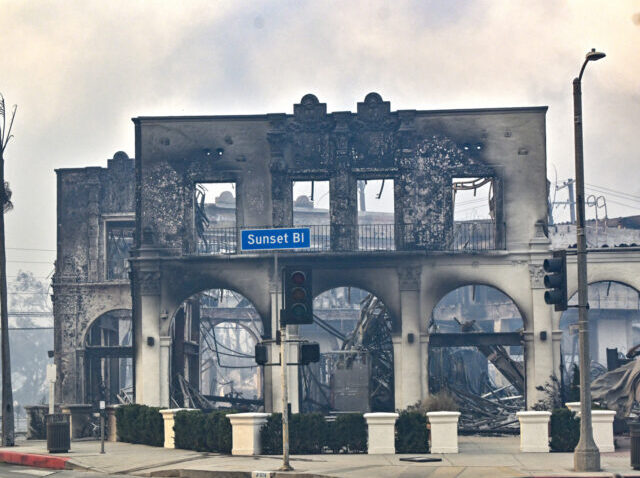The wildfires sweeping across Southern California have already caused an estimated $52 billion to $57 billion in damages and economic losses, according to preliminary assessments from AccuWeather. The blazes, which have forced mass evacuations and disrupted daily life, are being described as among the worst in the state’s history.
“This is already one of the worst wildfires in California history. Should a large number of additional structures be burned in the coming days, it may become the worst wildfire in modern California history based on the number of structures burned and economic loss,” said Jonathan Porter, AccuWeather’s chief meteorologist.
The worst of the fires are concentrated in an area stretching from Santa Monica to Malibu—home to some of the most expensive real estate in the country, where median home values exceed $2 million. AccuWeather noted that significant risks remain for residents, their properties, and local businesses. Beyond the immediate destruction, long-term impacts on tourism and public health are expected due to smoke damage and exposure to hazardous air quality.
As of Wednesday night, flames had advanced into the hills above Hollywood Boulevard, and firefighters were still struggling to contain three major blazes: the Pacific Palisades Fire, the Eaton Fire in the foothills of the San Gabriel Mountains, and the Hurst Fire north of the San Fernando Valley. Strong winds and dry conditions have exacerbated the situation, with wind gusts reaching up to 100 miles per hour in some areas, making firefighting efforts perilous and containment challenging.
At least five people have died, and more than 130,000 residents are under evacuation orders. More than 2,000 structures have already been destroyed. AccuWeather highlighted that these estimates are preliminary and could rise significantly if the fires continue to spread rapidly into densely populated neighborhoods.
A Perfect Storm of Factors
AccuWeather meteorologists explained that the fires are being fueled by a unique combination of weather and environmental conditions. Strong offshore winds driven by a high-pressure system over Nevada and a low-pressure system over Southern California have amplified the fire risk. Compounding the problem, Southern California has experienced an exceptionally dry winter, with the last significant rainfall recorded in April 2024. This prolonged dry spell has turned the region’s abundant vegetation—which flourished during two wet seasons—into tinder, providing ample fuel for the fast-moving fires.
“This is a fast-moving, wind-driven inferno that is threatening lives and causing catastrophic damage,” Porter said. “We’re just starting to get a clear look at the magnitude of the destruction and loss.”
To contextualize the scale of the disaster, AccuWeather pointed out that the 2023 Maui wildfires caused $13 billion to $16 billion in damages. Wildfires in the western United States in 2020 resulted in losses between $130 billion and $150 billion, while those in 2021 caused $70 billion to $90 billion in damages. The current wildfires follow a record-breaking 2024 hurricane season, during which hurricanes Milton and Helene caused a combined $385 billion in losses.
Evacuations and Emergency Response
The rapid spread of the fires has led to mass evacuations across the Los Angeles area, with traffic congestion reaching a critical point on Tuesday night. In some cases, residents abandoned their vehicles on gridlocked roads, forcing emergency crews to deploy heavy equipment to clear the paths for firefighting resources.
AccuWeather also warned that millions of people in the region could be exposed to hazardous air quality due to the smoke from the fires. Residents are advised to wear N95 masks and limit outdoor activity to reduce exposure.
“Millions of people could be exposed to unhealthy and dangerous air quality across the Los Angeles region from these fires,” Porter cautioned. “In areas of poor air quality, people should use N95 respirator masks and limit their time outdoors.”
A Long and Challenging Recovery Ahead
AccuWeather’s damage estimate incorporates a wide range of factors, including direct property losses, job and wage disruptions, infrastructure damage, supply chain interruptions, and impacts on tourism and transportation. The estimate also accounts for long-term health effects and government expenses related to evacuations, emergency management, and cleanup operations.
Experts warn that even after the fires are extinguished, the region will face a long and challenging recovery process. The physical destruction, combined with lingering health and environmental impacts, underscores the scale of the disaster. California will likely require extensive federal and state support to aid in recovery efforts.

COMMENTS
Please let us know if you're having issues with commenting.